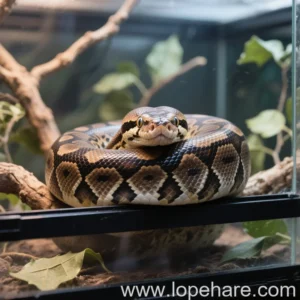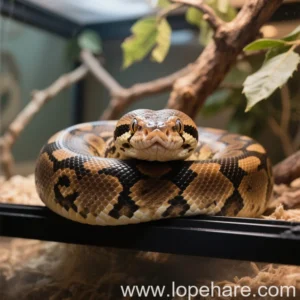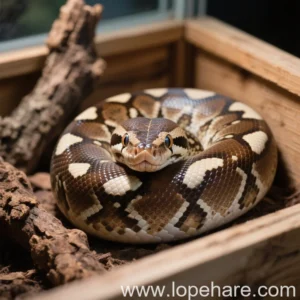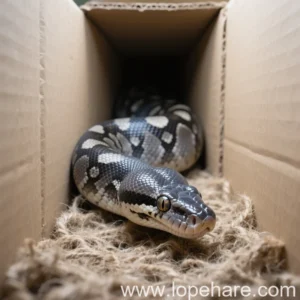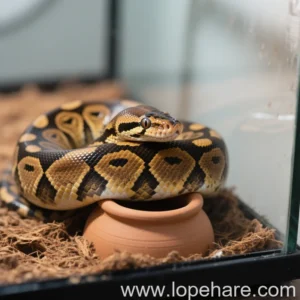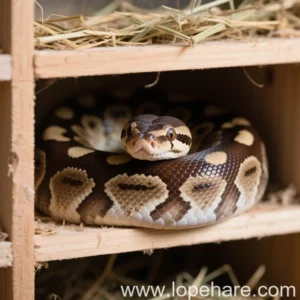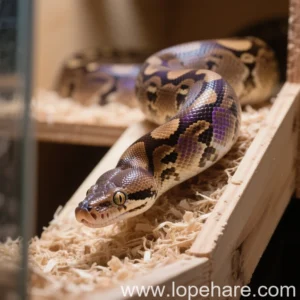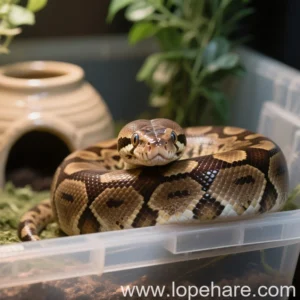Ball Python Stress Signs: How to Calm Your Snake and Improve Its Wellbeing
Welcome to lopehare! As advocates for niche pet care, we understand the unique joys and challenges of keeping fascinating animals like the Ball Python (Python regius). While often described as docile, Ball Pythons are sensitive creatures whose wellbeing is deeply tied to their environment and care. Recognizing and mitigating stress is paramount to their health and longevity. Unlike some hardier reptiles, a chronically stressed Ball Python can quickly develop health issues. In this article, we’ll delve into the signs of stress, common causes, and practical steps you can take to ensure your slithery companion thrives.
Understanding Ball Python Stress
Stress in animals, including reptiles, is a physiological response to perceived threats or challenges in their environment. For a Ball Python, whose natural instinct is often to hide and avoid detection, many aspects of captivity can be potential stressors if not managed correctly. Their survival strategy in the wild relies heavily on remaining hidden and feeling secure. When this sense of security is compromised, their stress response kicks in.
Chronic stress suppresses the immune system, disrupts normal bodily functions, and can lead to a host of problems, from appetite loss to respiratory infections. This is why understanding why is my ball python stressed is the first critical step in responsible ownership.
Common Stressors for Ball Pythons
Identifying the source of stress is key to resolving it. Several factors in a captive environment can contribute to a Ball Python feeling stressed:
- Improper Enclosure Setup:
- Size: Too large can be overwhelming, too small restrictive. A roughly 40-gallon breeder tank is often sufficient for an adult, but larger PVC enclosures can also work if cluttered appropriately.
- Lack of Hides: Ball Pythons need multiple secure hides (at least two – one on the warm side, one on the cool side) where they can feel completely concealed. Opaque hides are generally preferred.
- Lack of Clutter: Open, bare enclosures make snakes feel exposed and vulnerable. Adding fake plants, branches, and other decorations provides cover and helps them feel secure moving around.
- Incorrect Environmental Parameters:
- Temperature: Inconsistent temperatures, lack of a proper thermal gradient (warm side ~88-92°F, cool side ~75-80°F), or overheating/chilling.
- Humidity: Too low humidity (consistently below 50%) can lead to shedding problems and respiratory issues. Ideal humidity is often between 50-60% ambient, with higher spikes (70-80%) during shedding.
- Lighting: Constant bright lights, or lack of a clear day/night cycle. While nocturnal, they still need darkness.
- Excessive Handling: Ball Pythons are not pets that enjoy frequent or prolonged handling. Handling should be kept to a minimum, especially when they are eating or digesting.
- Loud Noises and Vibration: Placement near speakers, heavy foot traffic, or vibrating appliances can be disturbing.
- Lack of Privacy: Being in a high-traffic area of the home or having a transparent enclosure without covered sides.
- Feeding Issues: Feeding prey that is too large, feeding too frequently or infrequently, or issues with the prey itself.
- Illness or Parasites: An underlying health issue can cause stress.
According to experienced keepers and veterinary professionals, husbandry errors are the most common cause of stress and related health problems in captive Ball Pythons. Providing a suitable habitat that mimics their natural needs is crucial.
Recognizing Stress Signs
Ball Pythons are generally masters at hiding discomfort, but there are signs to watch for:
- Appetite Loss/Refusal to Eat: This is one of the most common and significant signs. While Ball Pythons can go off food seasonally, prolonged refusal or refusing food when they previously ate reliably often indicates stress or illness.
- Excessive Hiding: While Ball Pythons are crepuscular/nocturnal and spend much of the day hiding, if they refuse to leave their hide even at night, or appear unusually withdrawn, it could be a sign of stress.
- Pacing/Trying to Escape: Constantly rubbing their nose on the enclosure walls, pushing against the lid, or actively searching for an exit, particularly during the day, can indicate they are uncomfortable or stressed.
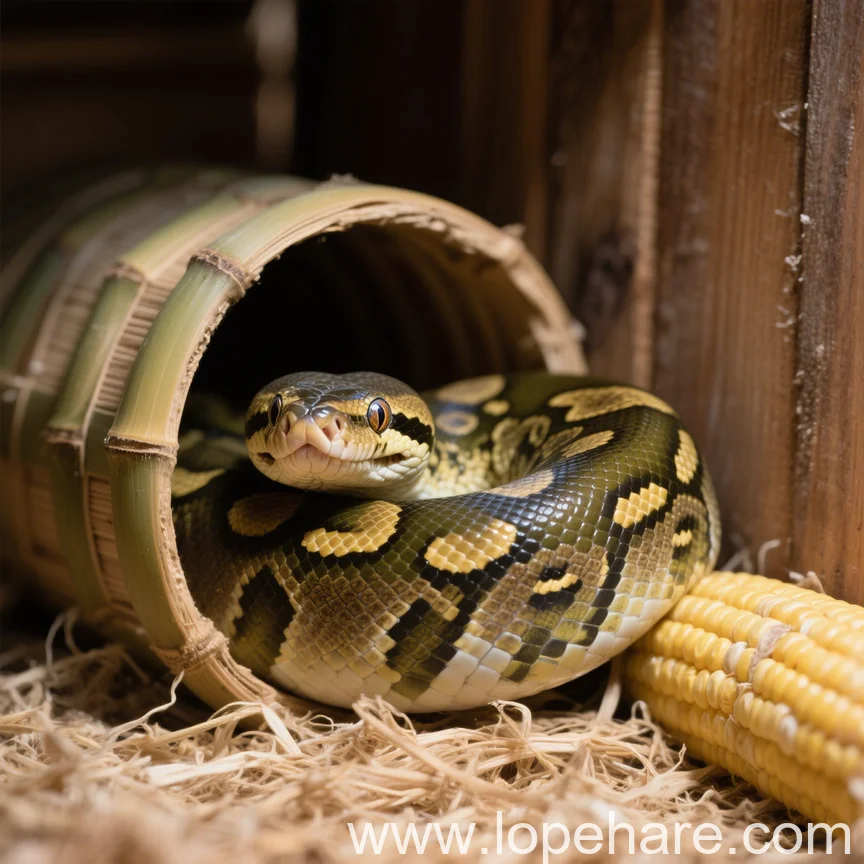 Defensive Behavior: Hissing, striking (even if the strike is closed-mouthed), or excessive and prolonged balling up when approached or handled. Occasional balling up is normal when startled, but constant defensiveness is not.
Defensive Behavior: Hissing, striking (even if the strike is closed-mouthed), or excessive and prolonged balling up when approached or handled. Occasional balling up is normal when startled, but constant defensiveness is not.- Regurgitation: While rare, regurgitating a meal is a severe sign of stress, improper temperature, or illness. This is a veterinary emergency.
- Abnormal Shedding: Retained shed, particularly over the eyes (eyecaps), can indicate low humidity or an underlying health issue exacerbated by stress.
- Lethargy or Weakness: Unexplained inactivity beyond normal resting, or appearing weak, is a serious sign.
Early Detection: Learning your individual snake’s normal behavior patterns is essential. Subtle changes can be the first indicators of stress.
Creating a Calming Environment
Implementing strategies on how to reduce stress in ball pythons primarily involves perfecting their habitat:
- Optimize the Enclosure: Ensure it’s the correct size, has multiple hides they can fit snugly into, and is filled with clutter like fake plants, branches, or crumpled newspaper. Cover three sides of a glass tank with opaque material to provide privacy.
 Dial in Temperature & Humidity: Use reliable digital thermometers and hygrometers. Ensure the thermal gradient is correct. Maintain appropriate ambient humidity (50-60%) and boost it during shedding cycles through misting or a humid hide. Avoid stagnant air with proper ventilation.
Dial in Temperature & Humidity: Use reliable digital thermometers and hygrometers. Ensure the thermal gradient is correct. Maintain appropriate ambient humidity (50-60%) and boost it during shedding cycles through misting or a humid hide. Avoid stagnant air with proper ventilation.- Provide Proper Lighting: A simple light cycle (12 hours on, 12 hours off) mimicking natural day/night is sufficient. While UVB isn’t strictly *required* by all keepers, some offer low-level UVB as it may contribute to overall health and natural behaviors.
- Substrate Choice: Use a substrate that holds humidity well and allows for burrowing, such as cypress mulch, coconut fiber, or orchid bark. Avoid dusty substrates or plain newspaper if humidity is a concern.
- Placement: Locate the enclosure in a quiet part of the house, away from direct sunlight, drafts, and high-traffic areas.
Handling and Minimizing Stress
While habitat is primary, interaction plays a role:
- Minimize Handling: Handle only when necessary (cleaning, health checks, moving) and keep sessions brief (5-15 minutes). Avoid handling after feeding (wait at least 48 hours) or when they are in shed.
- Approach Gently: Always approach from the side, not directly from above. Use slow, deliberate movements.
- Support Their Body: When handling, support the majority of their body weight. Allow them to move through your hands rather than gripping tightly.

When to Seek Veterinary Advice
If stress signs persist despite correcting husbandry, or if you observe more severe symptoms like regurgitation, abnormal breathing (wheezing, open-mouth breathing), significant weight loss, visible parasites, or unusual lumps/bumps, it’s time to contact a veterinarian experienced with exotic reptiles. Ball Pythons can decline quickly, and prompt veterinary care is essential.
Find a Specialist Early: Don’t wait for an emergency. Research and locate a qualified reptile vet in your area beforehand so you know who to call if problems arise.
Conclusion: A Stress-Free Ball Python
Ensuring your Ball Python is free from chronic stress is fundamental to its health and happiness. By understanding their natural instincts and providing an environment that caters to their need for security, proper temperature, humidity, and privacy, you can prevent many common issues. At lopehare, we believe informed keepers are the best keepers. Pay close attention to your snake’s behavior, make necessary adjustments to their enclosure and routine, and you’ll be rewarded with a calm, healthy companion. Ball Pythons are wonderful pets for those prepared to meet their specific needs, and mastering stress management is a big part of that journey.
References:
- Wikipedia contributors. (2023, September 15). Ball python. In Wikipedia, The Free Encyclopedia. Retrieved from https://en.wikipedia.org/w/index.php?title=Ball_python&oldid=1175505358
- Divers S. J., & East M. L. (2017). Reptile Medicine and Surgery (3rd ed.). Elsevier. (General reference on reptile husbandry and diseases)
